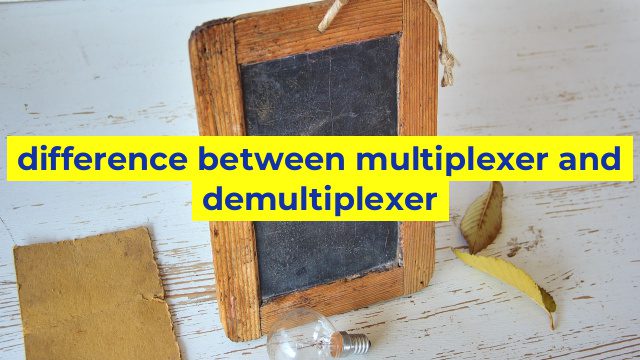The Difference Between a Multiplexer and a Demultiplexer
When it comes to understanding how data is transmitted between devices, multiplexers and demultiplexers are two critical components. These devices are used to assist with transmitting data signals more efficiently and accurately. They are used in a range of applications such as fiber optic communication, digital TVs, and computer networking systems.
Multiplexer
A multiplexer is also often referred to as a “mux.” It is an electronic device that combines multiple input signals into a single output signal. A multiplexer can be likened to a funnel – it collects different inputs and consolidates them into a stream of data that is transmitted through a single communication channel.
In essence, a multiplexer reduces the amount of data flowing through a communication channel, making it easier to manage and transfer information. The output signal from a multiplexer is a single stream of data, regardless of the number of inputs that it processes.
Multiplexers are essential devices that help transmit data in a more efficient manner. In telecommunications, multiplexers are used to combine several different data streams into a single high-speed stream that can be transmitted through a single communication channel.
Demultiplexer
Demultiplexers, on the other hand, are used to divide a single data stream into multiple output streams. Like a multiplexer, a demultiplexer is an electronic device, but it performs the opposite function. It takes a single input signal and separates it into two or more output signals.
A demultiplexer can be likened to a tap that divides a stream of water into multiple smaller streams. Using a demultiplexer makes it possible to transmits data to different devices simultaneously, even though there is only one input. A demultiplexer can send the same data signal to different devices at the same time, making it possible to share information among many devices.
Conclusion
To summarize, multiplexers and demultiplexers are devices that allow you to manage data in a more efficient manner. While a multiplexer combines multiple input signals into a single stream, a demultiplexer divides a single input stream into multiple output streams. Together, they form a fundamental component of modern communication and networking systems, ensuring that data is transferred accurately and efficiently.
Table difference between multiplexer and demultiplexer
| Multiplexer | Demultiplexer | |
|---|---|---|
| Definition | A multiplexer is a device that combines multiple inputs into a single output. | A demultiplexer is a device that splits a single input into multiple outputs. |
| Usage | Used to increase the data transfer capacity of a system. | Used to transmit data from a single source to multiple destinations. |
| Inputs/Outputs | Multiple inputs, single output. | Single input, multiple outputs. |
| Control Signal | Uses a select line to determine which input is connected to the output. | Uses a select line to determine which output the input is connected to. |
| Example | Used to switch between multiple audio or video sources on a TV or amplifier. | Used in digital communications to route a signal to different devices or data streams. |

